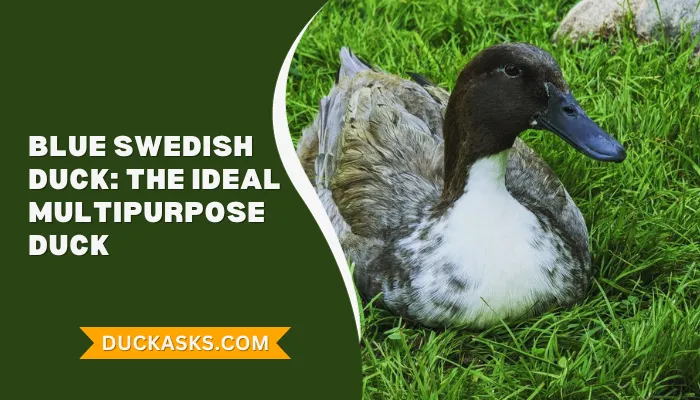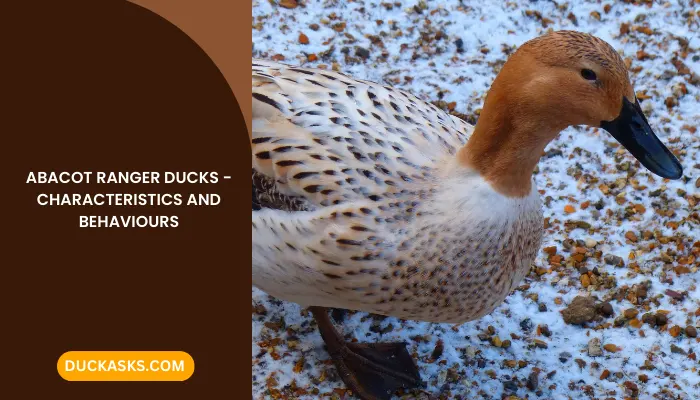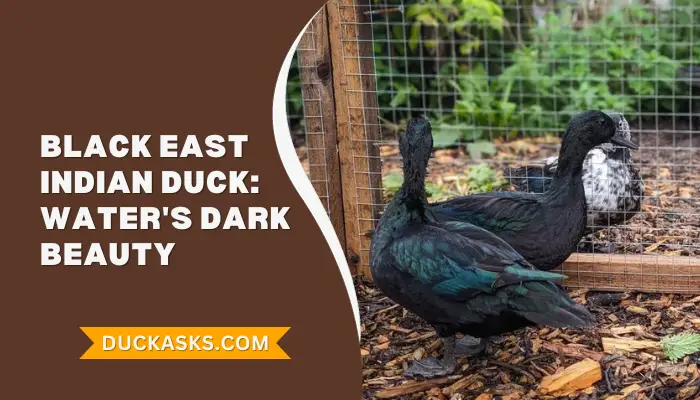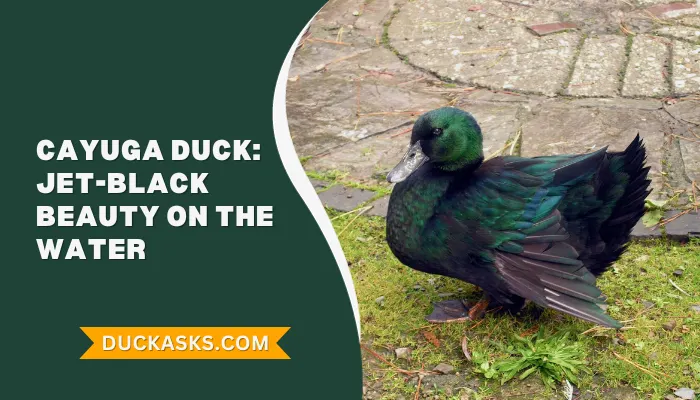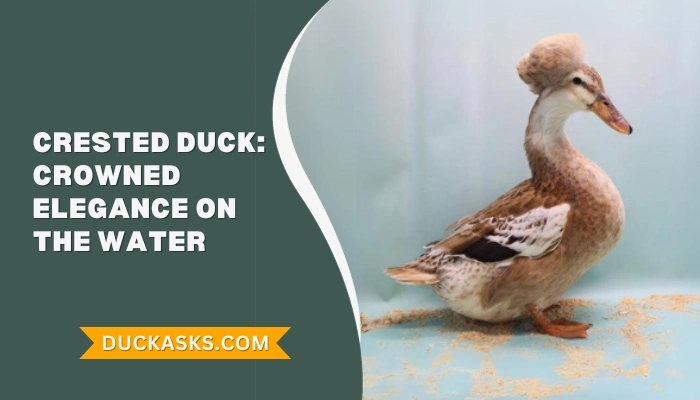Bali Duck: History And Breed Guide
The Bali duck is a fancy breed of ducks raised for show and decoration. These ducks have a distinctive crest, which gives them a unique look but is also a disadvantage.
This is because the gene responsible for developing this crest is a deformity that results in a high mortality rate.
All these reasons make the Bali duck one of the most fascinating species worldwide. Naturally, this also means that breeding and raising the ducks is tricky.
Fortunately, we’ve gathered all the information necessary to make things easier for you. Want to raise Bali ducks? Keep reading to learn how to do it successfully.
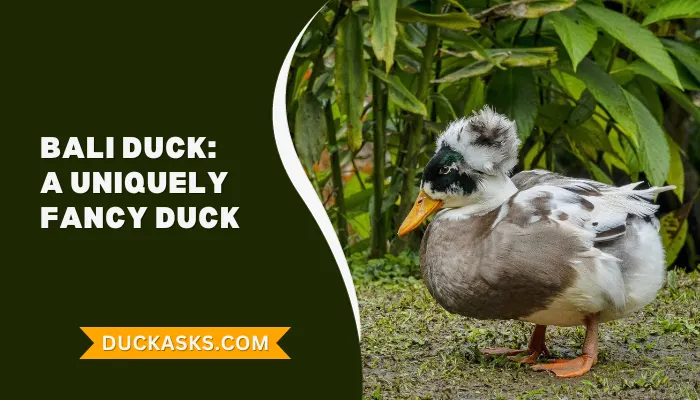
Looking for more articles about duck breed:
Bali Duck Profile
| Name | Bali Duck |
|---|---|
| Scientific Name | Anas Platyrhynchos |
| Common Names | Balinese Crested Duck Crested Runner Duck |
| Origin | Bali, Indonesia |
| Size | Small to medium |
| Weight | 5 and 6 lbs |
| Lifespan | 5 to 10 years |
| Feather Color | Most are white, brown, and Mallard |
| Climate Tolerance | High |
| Behavior | Gentle |
| Special Features & Flight | Crest Poor flight ability |
| Breeding | Easy |
| Easy to Keep? | Yes |
| Duck Purpose | Show, decoration, ornamental |
| Egg Productivity | Elevated |
| Rarity | High, mostly found in Bali, Indonesia |
Bali Duck Overview
Bali ducks (Balinese Crested Ducks, Crested Runner Ducks) are lightweight and small. They have a distinctive crest at the back of their heads, which makes them ideal for show or decoration.
These ducks can produce hundreds of eggs, but they’re not suitable as egg layers due to genetic issues.
History and Origins of Bali Ducks
The Bali duck has been a staple bird in Bali, Indonesia, for over two thousand years, at the very least.

Temples in the region have ancient stone carvings showing ducks with an upright carriage similar to the Bali duck. Thus, this could easily be the earliest reference available.
Fast forward, the Bali duck arrived in the United Kingdom from Malaysia in 1925, reaching a standardized status in 1930. However, the breed is still mostly available in Bali.
Physical Characteristics and Features
We all know the Bali duck for its unique crest, but what other features can you identify from this duck? Here, we take a deeper look to understand the appearance of this bird.

Appearance and Body Structure
The Bali duck is small and lightweight, usually weighing between 5 and 6 lbs. It has a thin and slender body, which it carries at an angle.
These ducks also have large shoulders and a heavier body composition when compared to the Indian Runner. Also, the heads are coarse, plus a bill shape.
Feather Colors
Bali ducks can be different colors, but white is the most common for their feathers. Brown and Mallard are other typical feather colors often seen in these ducks.
Differences Between Bali Ducks & Bali Drakes
The difference between Bali ducks and Bali drakes is that Bali ducks refers to males and females of the species, whereas Bali drakes is a term that refers to the sexually mature adult male only.
Behavior and Traits of Bali Ducks
Understanding the typical behavior of the Bali duck will allow you to create suitable living conditions for them. Here’s what you need to know about this breed.
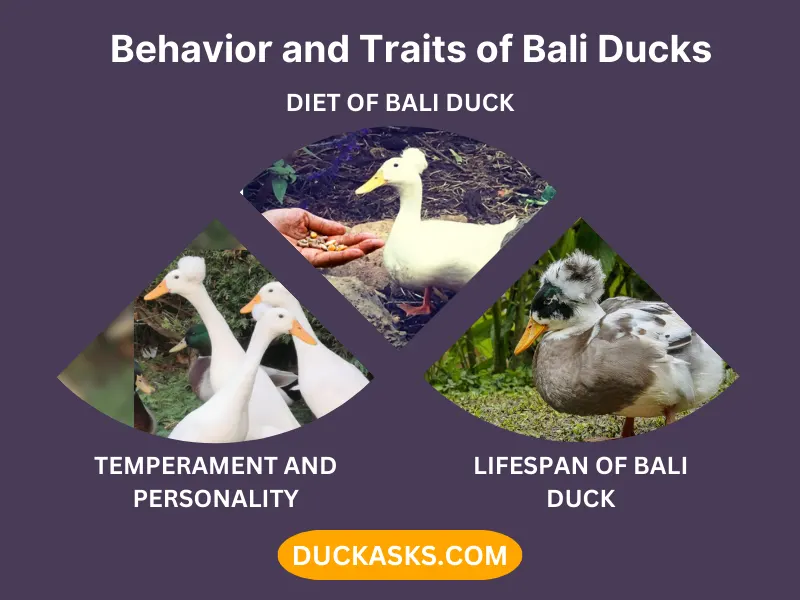
Temperament and Personality
Bali ducks have a gentle temperament, as they are social and calm birds. They can adapt to new places and other ducks with ease.
For this reason, the Bali is a breed of ducks capable of adjusting to different climates. Whether you’re in a rural or urban environment, the ducks will thrive.
Diet
The diet of Bali ducks is similar to other duck breeds. Ideally, you must feed these ducks with commercial food, vegetables, and fruits.
You can also complement their diet by including peas, zucchini, corn, and worms, among other things. One thing to consider is the age of the ducks to decide what to feed them.
From three to twenty weeks of age, you must provide grower food for young ducks. After twenty weeks, you have to change the diet to adult ducks.
Lifespan
The average lifespan of a Bali duck is between five and ten years. Nonetheless, most ducks perish when they’re around six years old.
How much the duck lives will heavily depend on creating a suitable environment.
Breeding and Raising of Bali Ducks
After courtship and mating, the female Bali duck (called hen) will lay between five and ten eggs. The female sit and keep the eggs warm, which will hatch in 26 or 28 days.
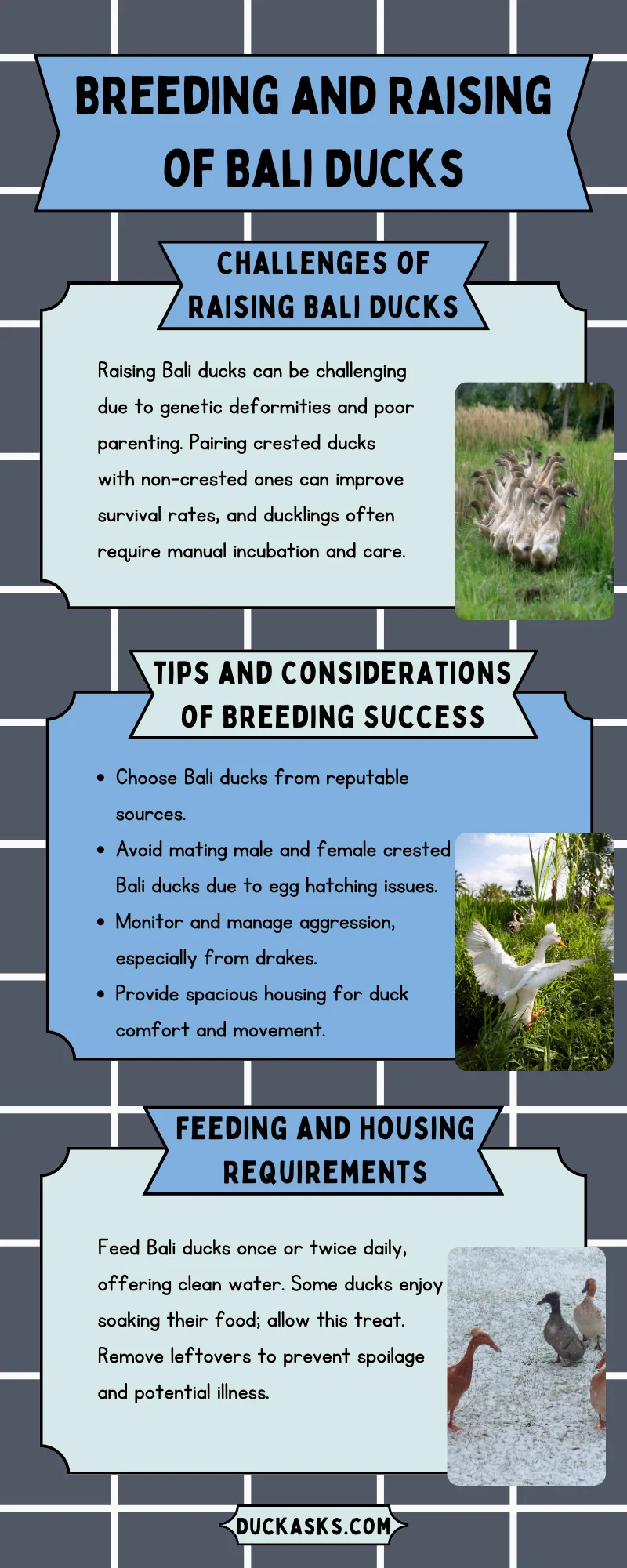
During this period, the male Bali duck (called drake) will be very protective and chase other ducks away from the nest. After hatching, the ducklings learn to fly from five to eight weeks.
Challenges of Raising Bali Ducks
The biggest challenge of raising Bali ducks is that their genetic composition often results in deformities or many ducklings dying early.
This is because the crested gene is a hole in the skull and can be fatal if the placement is not right.
Plus, the eggs of female and male Crested Bali ducks will not hatch. This is why breeders pair crested Bali ducks with non-crested variations in an attempt to increase survival rates.
Lastly, Bali ducks aren’t good parents. The hens are not good mothers and lack the broody instinct or the ability to raise ducklings properly. If you want to take care of the ducklings, you must incubate and raise them.
Some Tips and Considerations for Successful Breeding
- Select Bali ducks and get them from a renowned provider to avoid issues.
- Don’t mate a male crested Bali duck with a female crested Bali because the eggs won’t hatch. Pair a crested duck with a non-crested partner to increase the likelihood of hatching.
- Since the drake can be overly protective, keep track of aggressive behaviors to maintain peace within the flock.
- Create a housing area large enough to let the ducks walk and stretch their wings.
Feeding and Housing Requirements
Feed your Bali duck by providing food once or twice daily, and include a bowl or dish with clean water. Some ducks soak the food in water before eating it, and it will be a treat if you allow them to do this if they want.
Additionally, you must check the leftovers the following day or by night. Duck food spoils quickly, meaning you must remove it to avoid illnesses.
Housing Requirements
Remember that ducks need spacious areas to move around freely, meaning you must create these conditions for them to grow healthy.
Ideally, you must build a duck coop or house. This place must be at least three feet tall and have proper ventilation to avoid mildew or mold growth.
You can also include bedding built with materials like straw, which dry quickly and prevent moisture excess.
Security is equally important. Make sure to implement two-step locks to fend off predators, and consider using pressure-treated wood to create the housing. This material will last longer and be safer in the long term.
The Egg Productivity of Bali Ducks
The Bali duck can produce between 120 and 250 eggs yearly. These eggs are large and have blue and green to white shades, a color that makes the duck’s eggs very distinctive.
Still, caution is necessary if you intend to use the eggs for consumption.
For example, you must store the eggs properly to avoid spoiling the content. Also, monitoring the egg’s production is crucial to identify potentially damaged eggs before consuming them.
The Meat Quality and Popularity of Bali Ducks
The Bali duck is a popular type of duck, primarily due to the crest that makes it a unique bird among other breeds. However, the rest of the body structure is pretty standard.
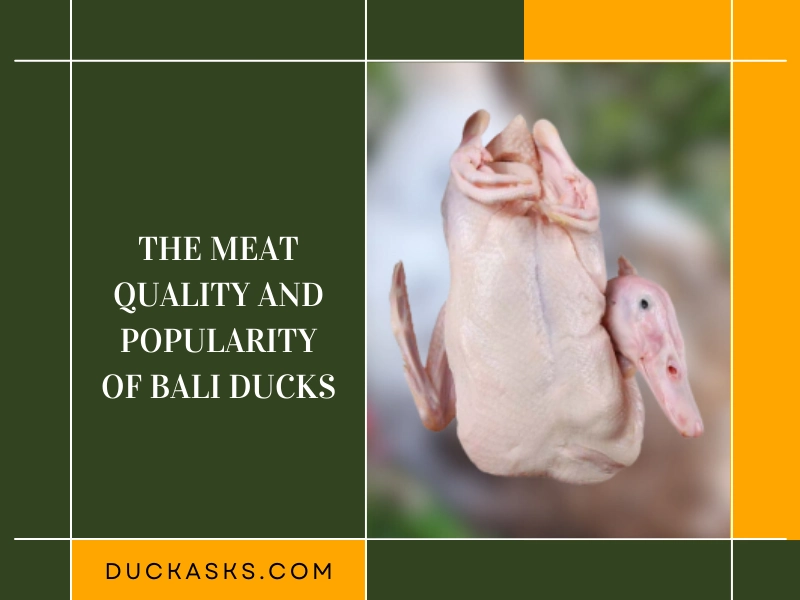
In fact, the duck’s build can be a disadvantage if you pretend to breed birds for purposes like meat production.
Since the Bali duck is small and lightweight, breeding it for meat consumption would be pointless. Raising the ducks will take a lot of time, and the meat obtained would not compensate for all the work required.
Nonetheless, some places like the United Kingdom often use this duck to make recipes like roasted duck dinners. Thus, the breasts of the Bali duck are quality proteins.
Frequently Asked Questions
- What kind of duck is in Bali Duck?
The Bali duck is a type of domesticated bird. It’s an ancient duck, similar to the Indian Runner Duck, but with slight differences. Currently, this species is among the oldest domestic varieties found.
- Are Bali Ducks Good for Small-Scale Farming?
No, Bali ducks are not suitable for small-scale farming. The gene that forms the crest on the head can be fatal, complicating the chances of survival for the ducklings during incubation. Thus, raising this type of duck is not easy.
- What are Bali ducks used for?
Uses for the Bali duck include show and decoration purposes. Sometimes, fanciers raise the ducks for egg production, but that’s not always the case. While the Bali can produce approximately 200 eggs yearly, there’s also a low hatch rate and genetic deformities.
Conclusion
The Bali duck is undoubtedly one of the most fascinating duck breeds in the world. While this duck is widely popular, its genetics make it harder to breed and raise them.
This is one of the reasons why farmers should be wary before deciding to breed Bali ducks. If you’re okay with those precautions, raising this duck as a pet or for decoration is fun and fulfilling.
Was this article engaging? We love ducks and all sorts of fascinating birds, too! Keep up with us by following us on Facebook, Twitter, and Pinterest for more articles like this.
References:
- https://www.omlet.us/breeds/ducks/bali/
- http://domestic-waterfowl.co.uk/bali.html
Image Credits:
- https://www.instagram.com/pajarivancho/
- https://www.instagram.com/little_chick_homestead/
- https://www.instagram.com/magnuserdtmann/
- https://www.instagram.com/il_giardino_dei_polli/

